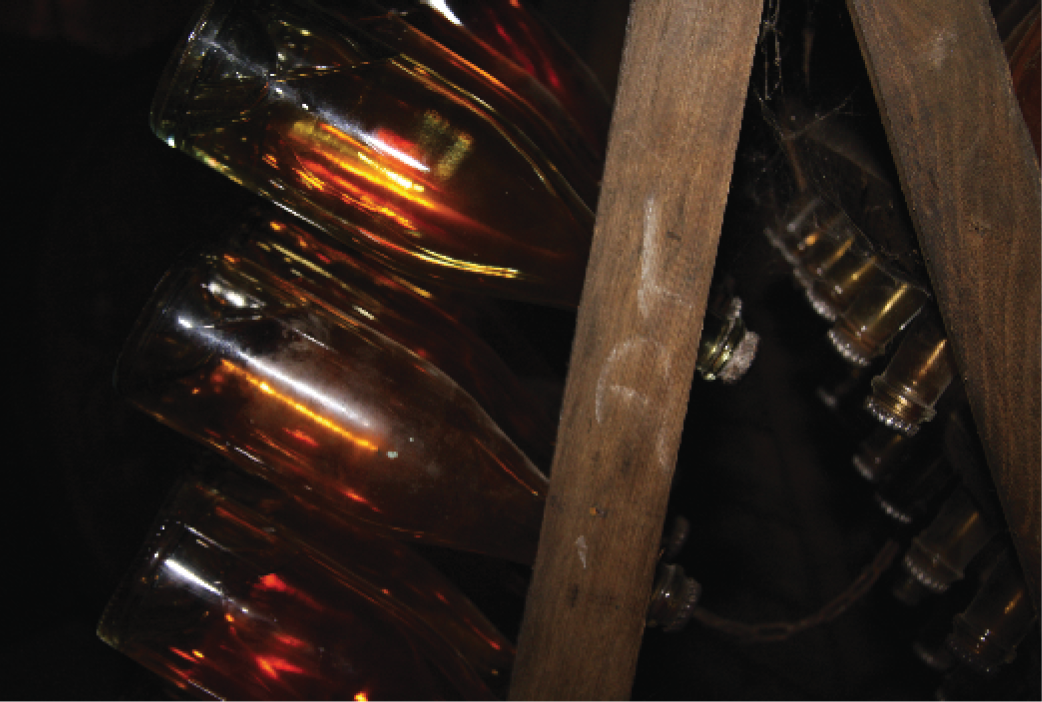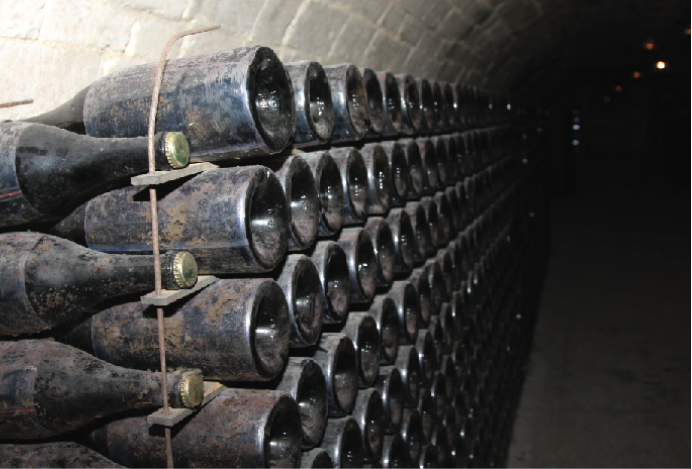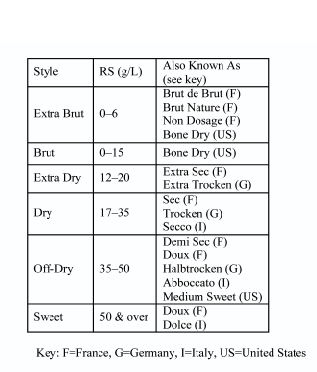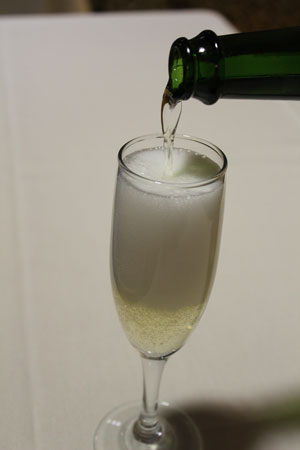
There is nothing as refreshing and enjoyable as a chilled bottle of mousseux (foamy), or fine bubbly. No longer are sparkling wines simply uncorked to celebrate a new year or a kid’s college graduation. Consumers are finally discovering this exquisite style of wine with global consumption that is now growing at twice the rate of still wine. That in itself, for a sparkling wine lover, is cause to celebrate.
The stigma of sparkling wine consumption into the 21st century can be attributed to three key factors.
1. Champagne had by far the biggest mind share of consumers having created a strong brand and image — it was the Ferrari of sparkling wines. But the high cost of production from manual labor to long cellaring and extensive blending translated into high prices. Consumers could not justify such a grandiose expense for anything but a once- or twice-a-year special occasion or celebration.
2. The alternatives were cheap sparkling wines that had nothing in common with champagne but bubbles. Most were tart and harsh, and so they were often blended with sweet fruit juice to make them more palatable. There were hardly any middle-of-the-road offerings, either in terms of quality or price. (Note: To avoid confusion, I use Champagne to refer to the French wine producing area and champagne to refer to sparkling wines from Champagne.)
3. And most importantly, consumers did not understand the style of wine like they did with still wines — reds with meat, whites with fish. What do you drink sparkling wine with? On its own or with (what) food? How do you serve it? It was all very confusing if not intimidating.
But the last quarter century have brought us a plethora of sparkling wines produced in as many styles from bone-dry to sweet — including sparkling reds — from just about every wine-producing region of the world. Worldwide production is estimated to be close to 200 million cases per year with France still leading the pack followed by its perennial competitors, Italy and Spain, with Germany and now Russia outpacing the latter two.
So how do we make sense of the many styles of sparkling wines from so many regions? In this story, we will look at the different types, styles and quality of sparkling wines produced around the world, the two main production methods, variations on those methods for home winemakers, and how to serve bubbly, including food pairings.
Not All Bubbly Wines are Champagne
Only sparkling wine produced in Champagne using the traditional method, or méthode champenoise, can be legally called champagne, which is now a protected name in the European union (EU). The region of Champagne is situated an hour-plus drive (by European speed standards) east of Paris and includes the famous towns of Reims and Épernay.
Sparkling wines produced in this method in other French regions and other countries can only make use of such mentions as “traditional method,” “classical method” or their equivalent translations, for example, metodo classico (in Italian) or méthode traditionelle (in French). In Burgundy, Loire and Limoux, for example, they designate their traditional-method-made sparkling wines as crémant, which translates to “creamy” in reference to their creamier mouthfeel owing to the lower level of CO2 gas. Modern crémants are increasingly made in a fizzier style akin to champagne. The Spaniards have their own designation, Cava, with the majority of production coming from the region of Catalonia in northeastern Spain.
All other “serious” bubblies from around the world are produced using the cuve close method, also known as the Charmat method.
Sparkling wine can also be made by carbonation, i.e. injecting carbon dioxide (CO2) gas, as is done with soft drinks; however, this method is not permitted for commercial wines carrying any kind of appellation — a legally defined and protected geographical indication used to identify where grapes are grown and wine is made.
Méthode Champenoise
Only three grape varieties are permitted in champagne-making: Chardonnay, Pinot Noir and Pinot Meunier. Many other varietals outside of Champagne are used. Although most champagne producers do not state the style on labels, many traditional method sparkling wine producers do. Blanc de blancs (white from white) refers to white sparkling wine produced entirely from white grape varieties whereas blanc de noirs (white from black) refers to whites produced entirely from red varieties.
Grapes are harvested earlier than still-wine grapes at around 18–20 °Brix to yield 10–11.5% alcohol to allow for a further increase of up to 1.5% when the wine undergoes a second fermentation. The final wine should ideally be in the range of 11.5–12.5% alcohol. An earlier harvest also means higher acidity, which will be balanced with the addition of sugar in the very last step just before the wine is corked. The amount of sugar added determines the style; some producers choose not to add any.
For white champagne, grapes are whole-bunch pressed without crushing to extract as little tannins as possible, which would otherwise make the high-acid wine unpalatable. For rosé champagne, grapes are first crushed and left to macerate with the juice for several hours to extract color from grape skins and then pressed. The wine is then fermented using white-wine fermentation techniques in stainless steel tanks.
Part of the art in making champagne is doing a rigorous tasting and selection of all cuvées, or base wines from the different tanks, and blending those according to the “house” style. Various brands are created based on the quality of the blends. Vintage-dated champagnes are blends from cuvées from a single vintage and are considered the best with a price to match. Non-vintage champagnes are assembled from cuvées from two or more vintages, a technique typically used for creating a consistent house style year over year.
Sugar is then added to the blended wine in each tank. Table sugar works well and just enough is used to increase the final alcohol level by approximately 1.5%, which works out to just over 25 g per liter of wine, or roughly 3 oz. per gallon. A starter culture using a strong fermenting yeast, e.g. EC-1118, is carefully prepared with the addition of yeast nutrients and then added to a small volume of cuvée to start fermentation and allow the yeast to acclimatize to what will be antagonistic fermenting conditions (low temperature, high alcohol, high pressure). Once fermentation starts, the inoculum is added to the entire cuvée. A riddling aid — a specially formulated adjuvant containing mainly tannins — is also added to help with the lees removal process (more on this later).
The wine with the added sugar, inoculum and riddling aid is immediately bottled in pressure-resistant glass bottles and capped with bidules, beer cap-like crown caps fitted with a special plastic container on the underside to collect fermentation sediments. Bottles are placed horizontally in bins or stacked sur lattes along the walls of underground cellars and allowed to ferment at relatively cool temperatures for several weeks or months. As the wine ferments, carbon dioxide gas forms and remains dissolved in the wine. Fermentation is monitored using an aphrometer (see photo on page 47), a bottle-mounted gauge to measure internal pressure, and is considered complete when it reaches 6 bars or approximately 90 PSI. That’s three times the pressure of a car tire. Anything under 3 bars is not considered a “true” sparkling wine but rather what is called fizzy, frizzante or pétillant.
Depending on the style and marketing needs, the wine may be left to age on the lees for an extended period of time, in the order of years for the best champagnes. Yeast autolysis imparts complex bread-like aromas and flavors so characteristic of these wines.
Now comes the challenge of removing all the sediment from each bottle while losing as little wine and pressure as possible. Bottles are shaken to stir up the sediment and then placed quasi-horizontally on pupitres, or riddling racks, to start the riddling process of collecting all the sediment in the bidule. Each day over the next 21 days each bottle is rotated and tilted slightly upwards until it is almost vertical (see the photos on page 44). A master riddler can riddle more than 20,000 bottles a day — 50,000 bottles according to other sources, which is quite possible having personally witnessed on a guided tour one riddler doing half a rack (60 bottles) in well under a minute.
Then, each bottle is disgorged, the process of removing the sediment, using a disgorging key. Master disgorgers can disgorge à la volée without the need for freezing the neck of bottles. The standard practice is to freeze the sediment by placing the neck of bottles in a brine solution for a few minutes and then disgorging — this reduces the risk of sediment falling back into the wine (see the photos of disgorging steps on page 48). Sediment would not only affect clarity but it would also cause excessive gushing and loss of wine. Disgorging causes the sediment to fly out of the bottle leaving the wine crystal clear. When performed properly, pressure loss is minimal and wine loss is limited to about 10 mL. In a new marketing twist targeted to sparkling wine aficionados, many producers of vintage-dated sparkling wine now state the disgorging date on labels.
A dosage, a sweetened topping solution, is added according to the desired level of sweetness, or more appropriately, level of “dryness.” Bottles are finally corked with a cork closure; the standard closure is a technical cork with two natural cork discs on the end that will be in contact with the wine. A wire cage or muselet is used to hold the partially inserted cork in place.
Much of this labor-intensive process has been replaced by automation from riddling gyropalettes to sophisticated disgorging and dosing machinery that have brought down production costs and intervals down significantly. Bubblies from New World producers are now very affordable, although champagne still remains pricey.
Cuve Close/Charmat Method
The cuve close or Charmat method is the alternative to the traditional method where capital expenditures, production costs, and time-to-market are an issue. Producers are increasingly making mention of this method on labels.
Popular Charmat-made wines include Prosecco from Veneto in northeastern Italy and Asti Spumante from the province of Piedmont on the northwestern side, the vast majority of German Sekt, and more recently sparkling icewine from Ontario and sparkling (apple) cider or ice cider from Québec and sparkling (Shiraz) red from Australia.
Prosecco, as the name implies, is generally made in a dry or extra dry style although the name refers to the grape variety, which is more precisely known as Glera. Asti Spumante is made in slightly sweeter style from Moscato grapes and at lower alcohol levels in the range of 8–10%.
Sekt is produced in a dry style from common German varietals such as Riesling, Pinot Blanc, Pinot Gris and even Pinot Noir.
In this method, the cuvée is produced as in the traditional method but is then transferred to pressure-resistant tanks where sugar and yeast are added to initiate the second fermentation. Fermentation is entirely carried out in pressurized sealed tanks — carbon dioxide gas cannot escape and thus remains dissolved in the wine. Sediments fall to the bottom of the tank as the wine ages. The wine is then bottled under pressure directly from the tank in a continuous process using a counter-pressure machine so as not to lose any bubbles.
Styles
Sparkling wines are classified according to dryness level or the amount of residual sugar (RS) as per the table at the top left of this page. Countries have different designations and requirements relative to residual sugar content and different terminology that make navigating sparkling wines somewhat confusing.
Does Size Matter?
We’re talking bubbles here. It used to be that true sparkling wine connoisseurs shunned anything but champagne. The argument was that champagne bubbles are very, very tiny compared to those in Charmat-produced wines, and that the smaller the bubbles, the greater the organoleptic qualities, i.e. more aromatic intensity, more flavors, etc. Data from researchers and anecdotal evidence from consumers are diametrically opposed on this issue. But this can be a moot point now that well-crafted — I emphasize well-crafted — Charmat wines can have some of the smallest bubbles. A steady stream of persistent fine bubbles is what’s important. And what’s certain is that large bubbles diminish the tactile intensity of flavors on the palate and hence pleasure.
Making Bubbly at Home
Making sparkling wine at home using the traditional method involves a lot of work, though it is not impossible. The biggest challenge is not in the process but rather in sourcing low-Brix, high-acidity grapes. Remember that bottle fermentation adds about 1.5% alcohol and the final wine should not exceed 12.5% or so alcohol. Anything higher will make the acidity unpalatable and the wine may require more sugar (for balancing taste) than you bargained for. The riddling process can be substituted by placing bottles upside down, a technique called sur pointes, and giving bottles a sharp twist every day to dislodge sediment from the side of the glass. And if you are not inclined to disgorge, you can store bottles upright and let the sediment fall and then, either serve the wine directly from undisgorged bottles being careful not to pour sediment, or carefully transfer previously chilled wine into new bottles and then recork.
In a clever variation of the traditional method for home winemakers, fermentation can be carried out by placing the yeast inoculum in dialysis tubing, which is semi-permeable membrane tubing made from regenerated cellulose or cellophane, and inserting it in the bottle containing sweetened wine to initiate bottle fermentation. The tubing has microscopic pores that allow the sweetened wine to interact with the yeast through the pores and ferment, but the larger spent lees particles are restricted inside the tubing. At the end of fermentation and aging, each bottle is uncapped and the tubing with spent lees is retrieved, leaving the wine crystal clear. No riddling, no neck freezing, no disgorging required!
A Cornelius (beer) keg can be used for making Charmat sparkling wine. The wine is transferred to bottle using a counter-pressure filler. The trick here is to slightly bend the tube that feeds from the bottom of the keg so that the opening will be just over the sediment that will form. A pressure gauge on the keg is also recommended to monitor fermentation progress. Carbonation eliminates the hassle of refermentation and separating the sediment out of the wine. The biggest advantage here is that you know exactly how the wine will taste since it undergoes no microbiological change and very little chemical change (slightly higher acidity due to carbonic acid).
In all cases, never add more than 25 g/L of sugar—more sugar will not necessarily translate into more bubbles, but rather a stuck fermentation. Yeast becomes completely inhibited at 7 bars (105 PSI).
Whichever method you use to make your sparkling wine, be sure to work with safety in mind. You will be handling bottles with as much as 6 bars (90 PSI) of pressure, making these real liquid bombs that will shatter and launch glass particles at dangerous speeds and gush wine to great distances.
Here are some tips to make sparkling winemaking fun and safe:
• Wear protective glasses or, better yet, a full-face shield, gloves and overalls.
• Only use glass bottles that are specifically designed with thick glass to withstand the high pressure of bubblies.
• Handle bottles with extreme care as they can easily shatter if knocked against a surface or if hit by a metal tool.
• Do not shake bottles; wine will gush out uncontrollably when disgorging. Other than a mess to clean up, you may also end up losing just about half a bottle.
• Point bottles away from your body and other people around you. Use some kind of safe enclosure to disgorge into. An old oak barrel with a cutout works very well.
• Never add more sugar than recomended for bottle fermentation.
• If you decide to use a freezer to chill bottles down to ease disgorging, use a timer to remind you to take bottles out. There is no worse mess than to have to clean up shattered sparkling wine bottles in a freezer — trust me on this one.
• Do not be tempted to use dry ice for freezing the neck of bottles to ease disgorging — the glass will become very fragile and/or simply break under the extreme cold temperature. Not to mention that dry ice comes with its own set of safety concerns.
Pairing and Serving Bubbly
Sparkling wine makes a great aperitif on its own to get taste buds excited in anticipation of a fine meal or as a refreshing patio sipper. It also pairs best with salty foods, such as crustaceans and other seafood. Russians prefer vodka with caviar, but give champagne or a fine New World sparkler a try for a hedonistic experience in wine-food pairing. For something more casual or laid back, like watching football on TV, try some inexpensive dry bubbly with unflavored potato chips. And if you prefer sweeter bubbly, that’s best saved for after dinner or by the pool on a hot summer day.
But please, never add OJ to sparkling wine (a cocktail called a Mimosa), at least not fine sparkling wine. Winemakers get offended having gone to great lengths (and expense) to craft fine bubbles, great aromas and sublime flavors.
Serve sparklers chilled in tall flutes —they show the bubbles, aromas and flavors best. Traditional coupes cause excessive loss of precious gas and organoleptic qualities. And the dryer the style, the less chilled the wine.
While sipping, do not be tempted to swirl the glass as with still wines; you would otherwise, again, be releasing excessive bubbles that winemakers worked so hard to get into the wine. There is no need to swirl as the rising bubbles all on their own bring up and release all those wonderful aromas.
Once done, wash glasses by hand immediately. A dishwasher would coat glasses with a very thin layer of soap that will seal all imperfections in the glass and prevent the next sparkling wine from bubbling. There is nothing less appealing than serving a fine bottle of champagne that looks flat, completely devoid of bubbles. Instead, rinse each glass several times under running hot water and wash the rim by applying a tiny drop of dishwashing soap and rubbing it on the circumference being careful not to get soap down the glass. Then rinse again several times, let drain and towel dry.
As for storing and saving opened bottles of wine — I don’t have much experience here — any pressure-resistant closure that grips securely under the lip of bottles are best. Gadgets that re-pressurize bottles do not work; they were not designed with gas and physical chemistry in mind. And don’t store an opened bottle with or without a closure for more than 24 hours; bubbles will quickly fade away. So enjoy your bubbly while it’s open — it’s not made to last once you pop the cork!

Sparkling Wine Styles







